Photographer’s Guide:
the Varanasi ‘Ganga Aarti’
Puja Ceremony
Whether for Hindu pilgrims on a spiritual journey or international backpackers on a decidedly more voyeuristic trip, the Indian city of Varanasi draws visitors from all over the world and one of the headline attractions in town is the nightly Aarti puja ceremony on the shore of the Ganges river at Dasaswamedh Ghat.
India is a great country for travel photography, but it can also be a hard place both as a traveler and photographer. The Ganga Puja ceremony is photogenic and atmospheric and a legitimate religious tradition (even if admittedly a bit showy/touristy), but with the low light and crowded conditions it presents a uniquely difficult problem for photography. I had trouble finding information on the Aarti ceremony especially, so hopefully these tips will help other travelers make the most of their nights in Varanasi.
(Note: if you’re looking for more general travel tips on Varanasi, Hippie In Heels has a good resource.)
1) Be Respectful… But Don’t Get Pushed Around
First off, always keep in mind that this is a religious ceremony. The pandits who perform the aarti ceremony are typically Hindu scholars and priests, and much of the audience is composed of pilgrims on religious trips to Varanasi. While a ‘puja’ can refer to any act of worship in Hinduism, an aarti ceremony is more specifically the use of fire to honor a specific deity. The Varanasi aarti is a devotion to ‘Maa Ganga’, represented in physical form by the Ganges River (the holiest in the world for Hindus). For Hindu visitors to the city the Ganges represents the chance to wipe away all the sins of a lifetime and, for those fortunate enough to die and be cremated here, release from the cycle of rebirth. This is an extremely important place for Hindus, so keep that in mind as you interact with others watching the ceremony.
That being said, the Dasaswamedh Ghat where the Ganga Aarti happens every night is a public place. There are touts who will offer to lead you to a nearby balcony (for a fee) or set up chairs just to the side (for a fee) or really anything else you can think to ask of them (for a fee). If you want to take them up on these offers feel free, but you can also post up on the ghats alongside the pilgrims without asking anybody’s permission. If somebody tells you otherwise or pressures you to give them anything, they’re lying and you can safely ignore them. (On the other hand, feel free to contribute to the collection plate that representatives of the temple pass around during the ceremony.)
2) Choose Your Vantage Point
While you’re pretty free to choose where you want to watch the aarti from, make sure to choose well as soon as you arrive because it will be hard to reposition during the ceremony itself.
The most immediately obvious choice is right in the front, at the foot of one of the pandits, looking out to the river behind. This has the benefit of offering a really nice neutral dark background (see the photo on the right above), but can be tricky because the main light source will often be either directly behind or just to the side of the priest you’re closest to. This will be a good place to use a fairly wide prime lens, something like a 35mm, but don’t rule out a telephoto here for getting detail shots of the pandits or the implements they use.
Alternatively, my favorite vantage was from atop one of the platforms just beside the aarti stages. The photo to the left above was shot from this angle, as well as the first photo in the post. This can be great for using the pandits as a sort of living leading line, but also means you have to deal with the crowds that are watching and the fairly chaotic background that implies. The biggest frustration may be the strings that are used to ring the bells above the pandits. If you look back at the first photo in this post, you’ll see gossamer threads cutting diagonally across the top left corner of the shot. These will be an issue the entire time you’re shooting from here. On the positive side, the way the lights are arranged means you’ll have more to work with here than pretty much anywhere else.
Finally, though I didn’t try them, there are the paid options. The easiest is up on the balconies nearby. While this might make for a strong wide-angle shot to establish the atmosphere, I don’t expect it would be very useful for most of the ceremony. Even if you’ve got a brilliant fast telephoto to get in close and still have enough light, the background will be full of tourists on boats just beyond the priests. The other would be to get on a boat in the Ganges, plenty of which offer spots to viewers. If you can get on the front row I expect it would be a great way to isolate the priests while still showing the crowds in the background, but any further back and you’ll have to deal with lines of other boats and viewers in front (as per this photo from Wandering Soles, which is a good shot but which wont offer much variance for a whole set). For people who are more interested in watching than photographing or for photographers with time for multiple visits, this is worth checking out. If I’d had once more chance to see the ceremony, this is where I would have gone for on my third time.
No matter where you decide to watch from, keep in mind that the pandits spend the majority of the ceremony facing the river but will also turn at right angles to the river as well as directly towards the crowd throughout the ceremony. You’ll get the most face time from the river, lots of side views from the platforms, and spend a lot of time staring at people’s backs from the main crowd.
3) Show Up Early
While the ceremony begins shortly after dusk each day, people begin to show up much earlier than that. I showed up around 5p both times (roughly an hour before it started) and still wasn’t even close to being the first person waiting. For the viewing platforms on the side this wasn’t a problem, but when I was trying to get right in front of one of the pandits I ended up kneeling at the back end of one of the wooden seating platforms and having to use a telephoto for pretty much the entire ceremony. If you want to get right up in the front, you’ll need to get there even earlier.
4) Show Up Often
Of course, there’s no reason you can only go once. Varanasi is a cool city, the entire Old Town is fascinating, and there’s constant action on the ghats. You’re doing yourself a disservice if you only stay one or two days, and if you’re in town for more than that you may as well hit up the aarti ceremony a couple of times. Through general laziness and an acute digestive malaise I only made it twice, but would have been happy to see it two or three more times. This also goes back to point number two, as it allows you to shoot the ceremony from several different angles and so get a bit more diversity in the photos you take.
5) Lenses: Pack a Prime and a Fast Telephoto
So, realistically, you’re traveling as a photographer and you’re going to take whatever lenses you travel with. I get that. For myself, however, most of the pictures I really liked (and the majority of the ones I’ve used here) were taken somewhere between the 130mm and 200mm range [from the viewing platform] or the 70-110 range [from just in front] on a telephoto. My 18-200 telephoto is useful but not the fastest lens at full extension, so I had to pump the ISO pretty high (often 1600-3200) which resulted in a lot of noise. Ideally I would use a fast prime, something like a 100mm f/2.8 or a 50mm if you’re sitting close. I also carry a wide-angle that I didn’t use at all, but that’s partially just because it’s awful in low light. However, it would have been of limited application here anyways I think.
6) Work On Your Timing
There’s a lot happening during the ceremony: switches between religious implements and the pandits turning to face different directions and of course they’re not always moving exactly in unison. Rather than shooting frantically, take a moment to pay attention to the order of it and you can usually predict a bit of what will happen next. In the photo above it took a couple of tries to get the priest isolated within the incense smoke of several different braziers, but given the repetitive nature of the puja I was reliably sure that it would give me a couple of opportunities to capture it. This is true of a lot of the moments involving fire as well. There’s a beautiful half-second during each swing where the fire from the burner lights up the pandit’s face but before it blocks him from view. These are most of my favorite shots from the ceremony (if, uh, you hadn’t noticed that by this point in the post).
7) A Shower of Flowers
Almost at the end of the aarti ceremony, when the fire burners are put away and they’re swinging around the incense once more and you mostly think to yourself “I’ve got most of the photos I need”, pay attention. There will be a moment when all the pandits pick up a bowl of (I think?) flower petals, bless them, and then throw them down off the Dasaswamedh ghat and into the Ganges River below (photo above). I totally missed a photo of this the first time I watched the puja ceremony, I simply didn’t have the camera ready and it’s over extremely quickly, and was cursing myself for it at the time. Judging by how few shots (if any?) I saw of this while looking at google images of the ceremony I’d guess most people do the same thing I did. It has some potential, though, and while I like the shot above I think it would have been even better from the platform to the side – imagine this photo x 7 and the amount of color that would be.
8) Make Friends in the Crowd
Finally, though this is as much a travel tip as a photography one, interact a bit with the crowd around you before and during the ceremony. Varanasi was be a hard place to meet people, at least for me, because there were always SO many people that wanted to sell me a boat ride or massage or special viewing spot or hashish or whatever that I was often on my guard when somebody started to approach. During the puja ceremony, though, you’re surrounded by people mostly just hanging out watching the performance and enjoying themselves. Many are on holiday/trips themselves. This is a good place to chat with people, whether local or tourist, and will sometimes end up being photo worthy as well (left photo above).
If you’re really set on catching the aarti ceremony several times, you’d do well to stay somewhere close to Dasaswamedh Ghat. We booked a place on Hotels.com at the next ghat over, Munshi Ghat. As long as you find somewhere on the river, preferably towards the middle near Dasaswamedh Ghat so you’re close to the puja ceremony, it’s easy to get there a couple of times and to be there early enough to find a good spot.
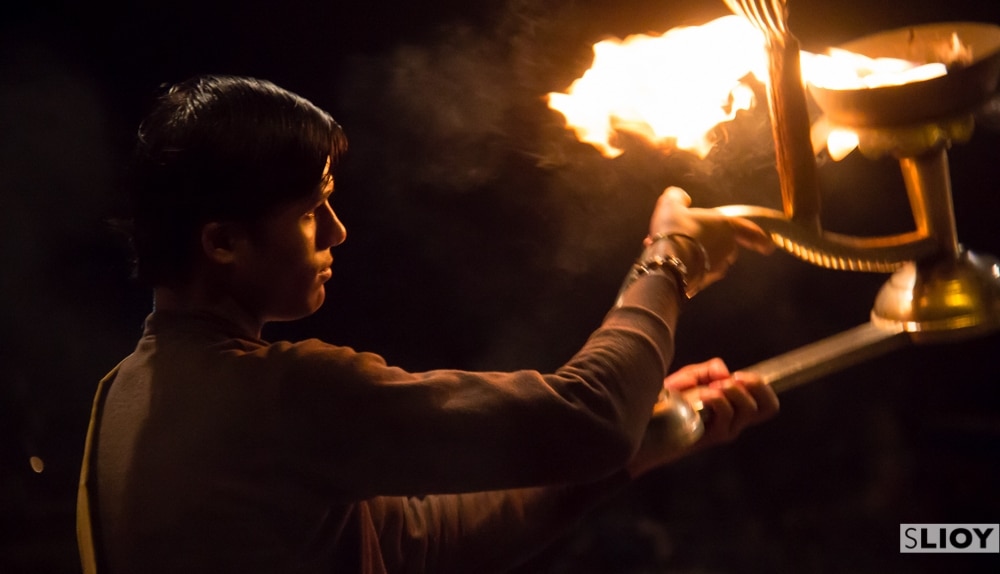
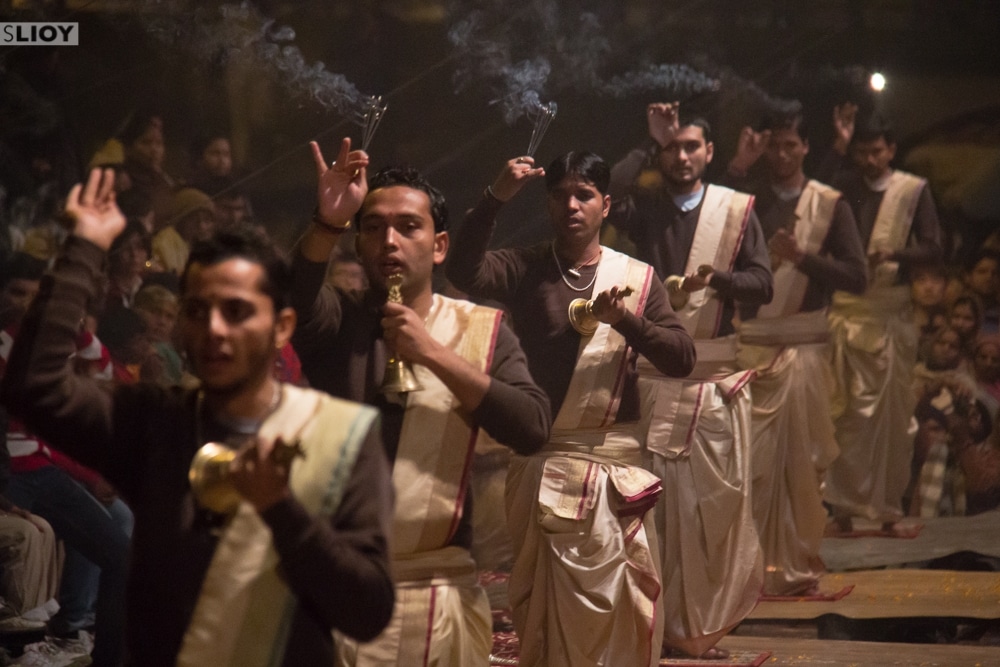

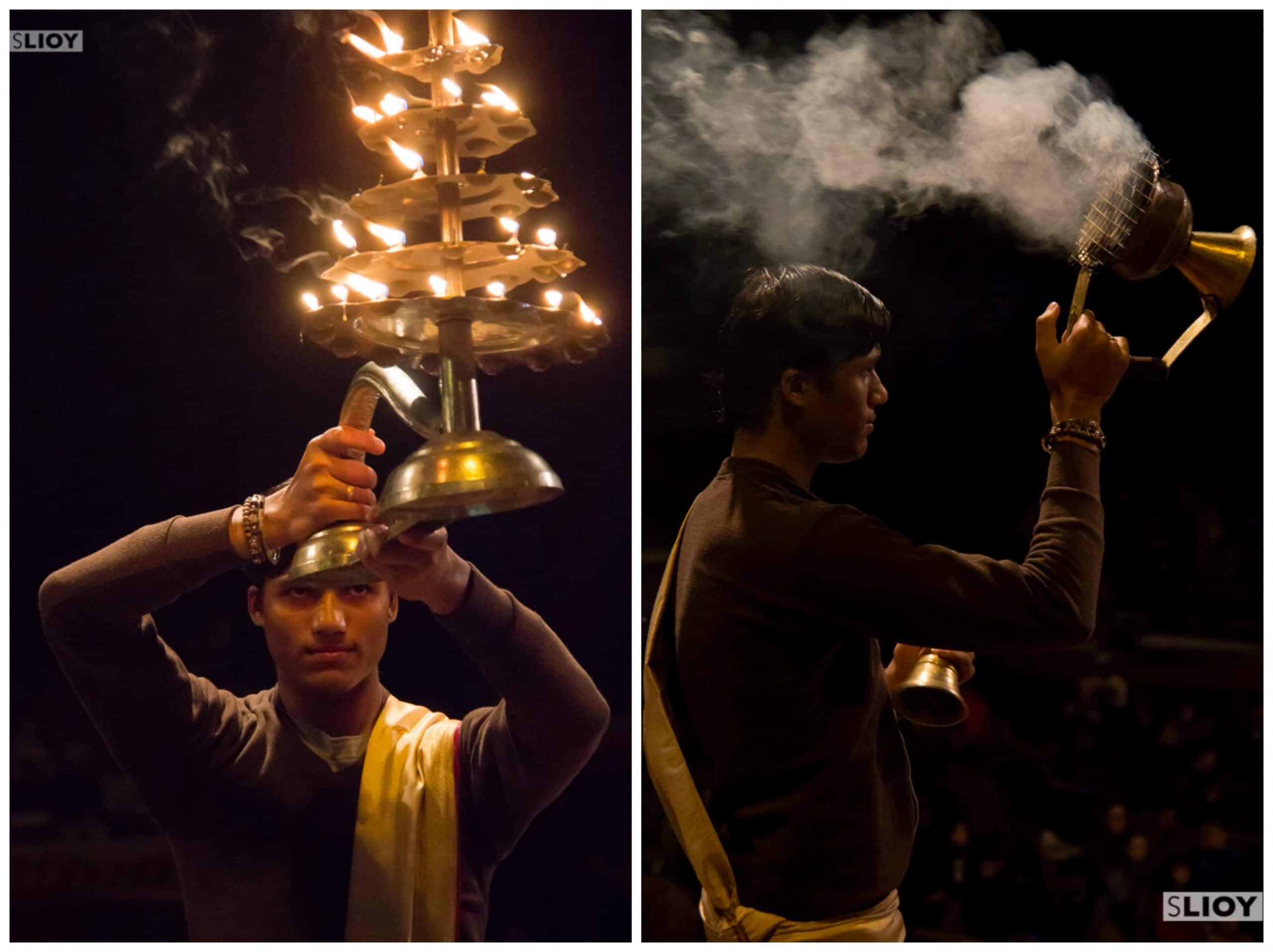
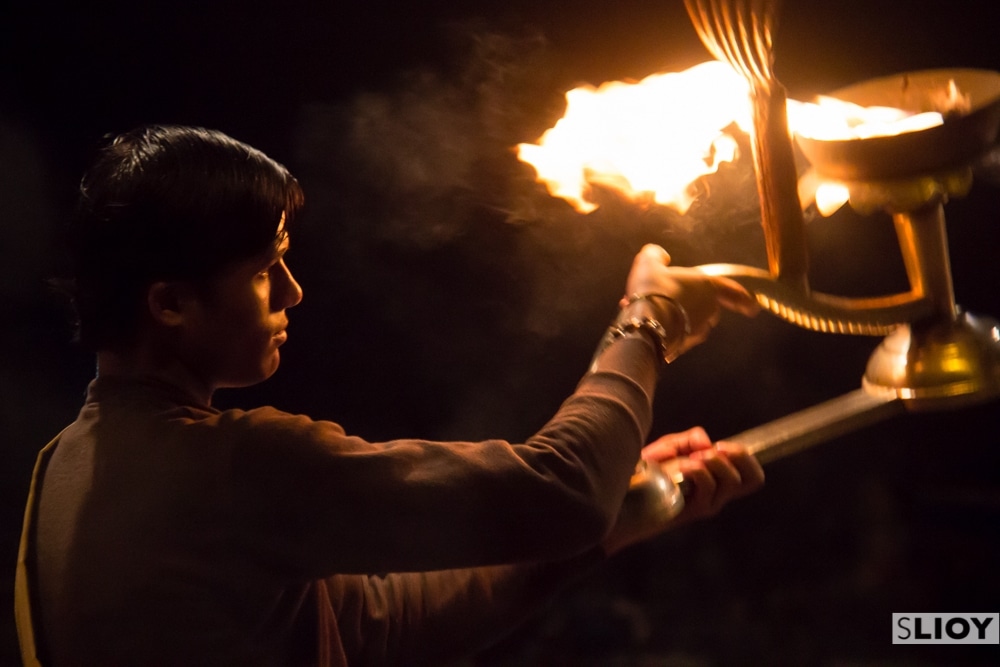
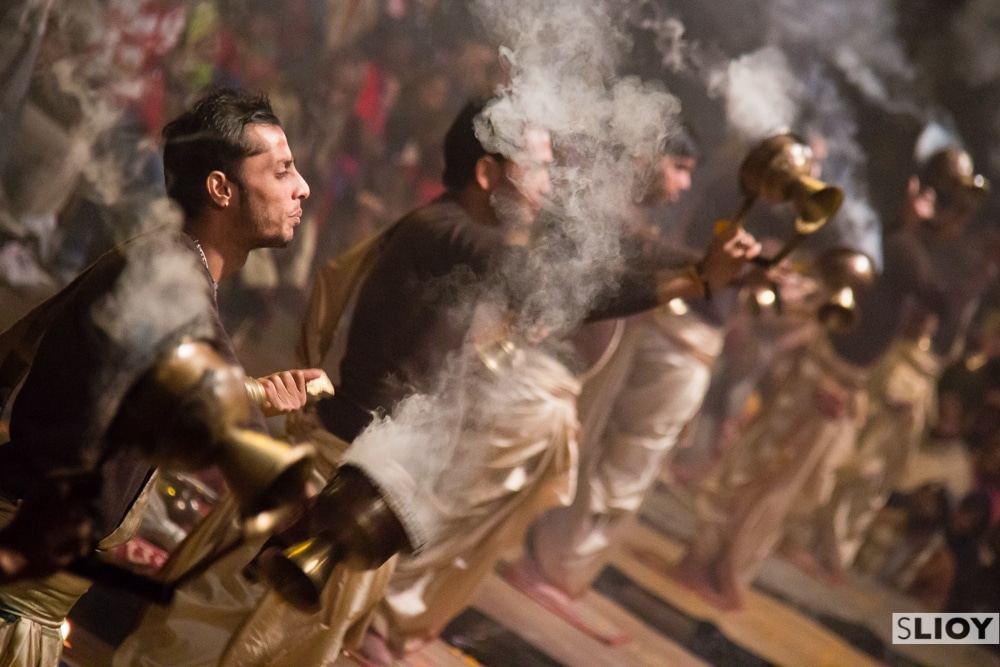

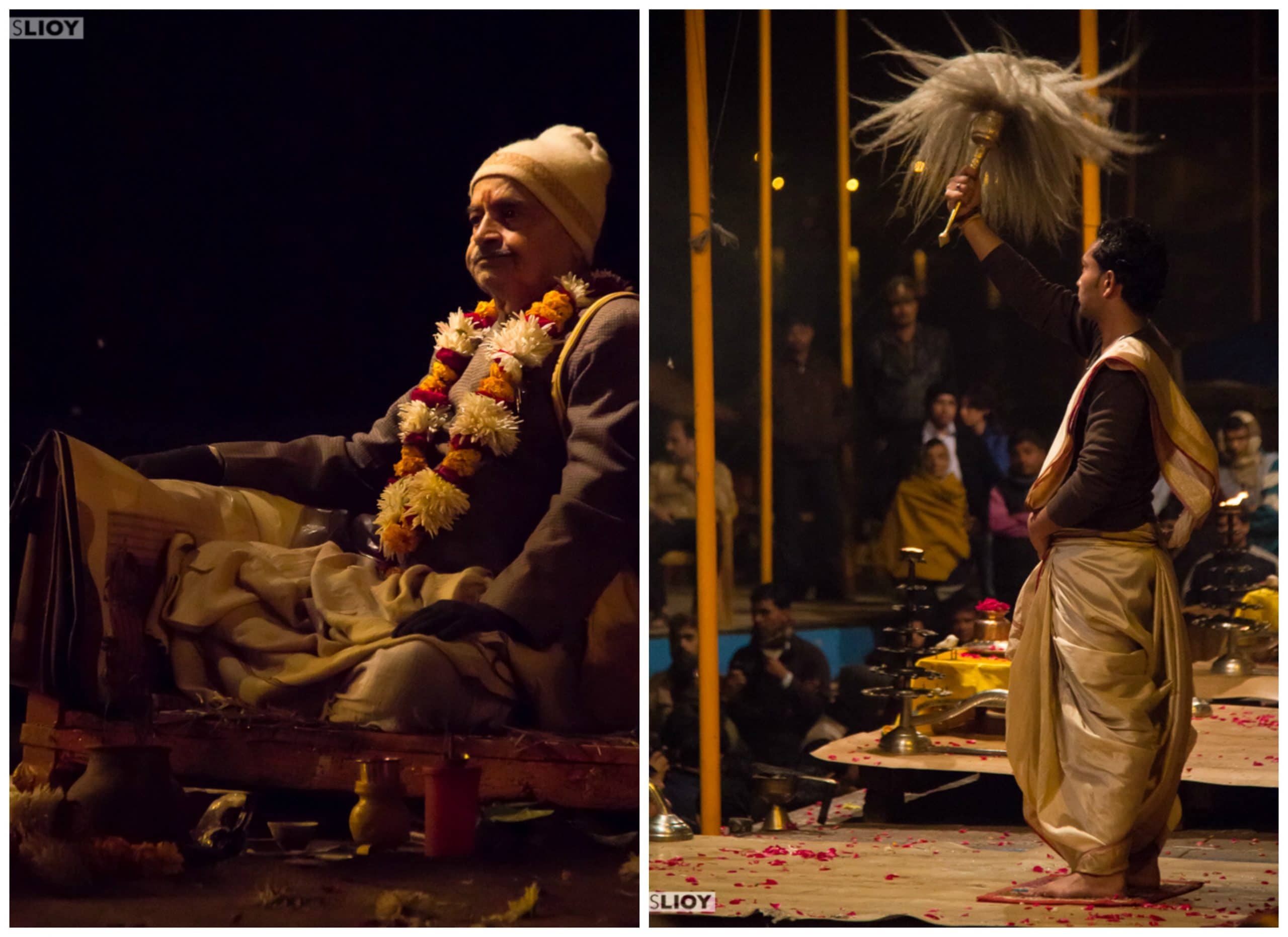
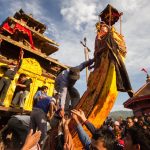


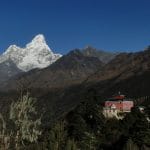
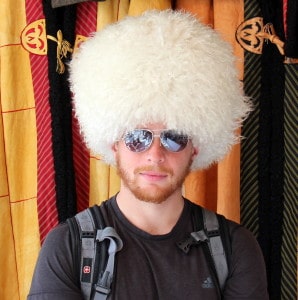
I remember trying to get photos of this on a crappy old canon point and shoot back in 2006. Needless to say the results were not National Geographic in nature 😛
Haha… I put a lot of thought into how to do this one right. I’m pretty satisfied with what I got, but it would have also been nice to go once or twice more for a few other angles.
My friend was just showing me his video of this and it made me want to go instantly! I had no idea it took so much planning to get a good shot/video of it though. :p These are some really handy tips – low light plus crowds is always a tricky combination to deal with. You managed to get some fantastic photos, nice work.
I was there at a busy period right after NYE, but I hear that in summer it gets even more crowded. Definitely worth checking out though, both the ceremony and Varanasi in general.
Good for you for both these incredible images and also being able to mingle in the crowded throngs of people! The crowds would be a challenging aspect to overcome in order to get these stunning shots 😉
Like every good tourist site, the answer lies in a responsible combination of kind words and sharp elbows!
These are such good tips, and your pictures are simply amazing. I still have a lot to learn when it comes to photographing people. When I went to Bali when I was a teenager, I visited a lot of temples and would have loved to take pictures of the ceremonies. But I was always afraid of disrupting the event or bothering the people.
Thanks Nanette! It’s a fine line, eh? I often see photographers doing just what you worried about – generally getting in the way of both the event and the spectators – and I hate to see it. To my mind, one of our responsibilities as both travelers and photographers is to make sure that our own ends don’t disrupt the flow of life in the places we visit. If you’re hired by an event then, by all means, do what you need to do to get the shot. Otherwise, do your due diligence beforehand to make sure you can get the photos you need without being a nuisance to those around you.
I would like to see this ceremony, seems interesting. Great tips, I especially like the last part, it’s always good to make friends in the audience !!
Interesting it definitely is. Especially in pretty touristy Varanasi, I don’t think I found a better place to sit and talk to real people than at the aarti.
Great advice. Low light photography is still kryptonite for me — I always struggle with these kind of ceremonies. But, visually they are so amazing – you captured it well!
Yea, that prime definitely make things easier even if I didn’t use it as much as the telephoto. I’ve eventually just embraced higher ISO combined with noise reduction in post, which seems to be the best combination given the current gear I’m shooting with. Thanks, though I must say I’m a little jealous of your lion in Kruger as well!
never been to India and never heard of the ceremonies but you got my interest! And the photos you took are pretty good considering the lack of natural light and smoke. I am surprised they let you take photographs of the ceremony
Like so much of India, the ceremony is just out on the streets in public so it would be hard to enforce a photo ban. Perhaps more than that, I’m surprised they don’t try to sell ‘photo permits’ to people who show up and are looking to capture it!
I was watching a programme about Varanasi the other day and it looked amazing, I added it to our list of places we want to visit on our RTW trip straight away… then came across your amazing post too, guess we have to go now! Your photos really captured the spirit of the ceremony. Such an interesting culture to experience, thanks for sharing.
Glad to reinforce that! 🙂 Make sure to stick around for at least a few days. Varanasi’s old town was actually one of the most comfortable areas we stayed in India (despite all the cow poop), and it has a nice atmosphere compared to places like Delhi or Agra that people (myself included) usually visit on a first trip to India.
Love your pics, it’s not often you get such good images of what really does on at these ceremonies. I’d love to visit Varanasi one day, such a different place to experience!
Thanks Heather. Definitely check the place out if you’ll be in India.
what fantastic pics! you really captured some great moments from the ceremony. We were there March last year, and we absolutely loved Varanasi – even though I was convinced I would hate it. The colours, the life, the death, the ceremonies – it’s such a fascinating breathtaking place.
Thanks for sharing your pics
I was the same! I expected it to be a really challenging place, and it turned out to be my favorite stop (on an admittedly limited trip) in India! I remembering seeing your Varanasi post while I was researching, by the way, you got some great photos yourself.
These are incredible photos! They give such a real sense of what it must really be like to be there and experience this ceremony. Thanks for sharing the great tips.
Thanks Sarah, I hope they come in handy if/when you get down that way.
Fascinating ceremony! I Would love to visit Varanasi some day. Great tip to meet locals, will remember that for sure.
It was the top spot on our whole quick India trip, I think. I’d definitely recommend giving it a visit.
Such stunning pics! As an Indian I’m well aware of how difficult it can be to capture so many rituals, haven’t gotten down to seeing Varanasi yet, but will soon!
Thanks Revati, I hope you enjoy Varanasi as much as we did!
This is just great! I always search for photographers tips before heading to destination, but it is not easy to find them. I would like to have something like this for every country! Thank you, your photos are just great!
Thanks Andreja, I hope you’re able to get to Varanasi and make use of them!
Great guide! Would be useful to have it when I was there…not easy to shot at that amazing ceremony! One of my favorites in Varanasi 😉
Right? I’d seen so many pictures around town of the ceremony that I knew I’d be disappointed if I got back shots of it, so figured it was worth some consideration beforehand so that I could make the most of it. I’m satisfied, but of course would be happy to go back and give it another try!
Very useful observations… it is a nice gesture to share to all.
Thanks
Thanks Sudeesh, hope they’re useful to you!
Mesmerising shots. Just WOW!
Have a question, what would be the exposure in this low light condition?
Fast, of course!